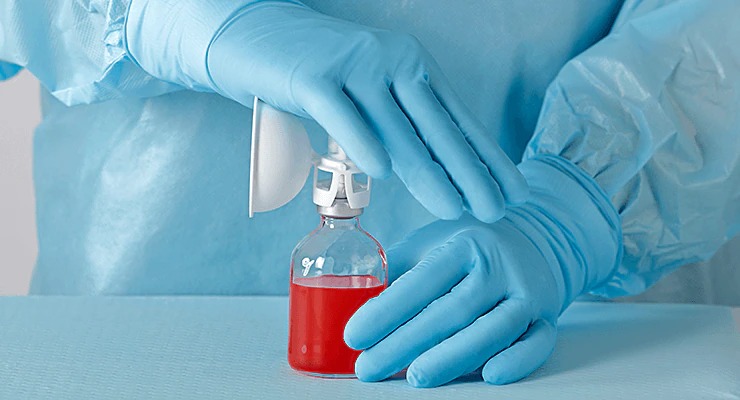PhaSeal Optima Vial Protector
Professional project comprised of multiple teams assigned to develop system components. The broader engineering team that I was member of was comprised of 8 engineers and designers. Development of my system component was in collaboration with two senior engineers. My responsibilities included collaboration in design and prototyping, collaboration in user testing and human factors testing, lead for caps design, and lead for ethnographic studies of compatibility.
In the early 2000's BD acquired PhaSeal, a closed system transfer device (CSTD) that was considered the gold standard for the safe compounding of hazardous drugs in hospital pharmacies. CSTD's are used for compounding and administering hazardous drugs to prevent exposure of drug or vapor to healthcare workers. The system still held market share but was rapidly losing ground to innovative competitors. As a result, a large project was kicked off to redesign and improve the system. I was assigned to some product testing and the small R&D team charged with redesigning the vial protector, one of two major system components. This device is pressed onto drug vials so that the spike at center pierces the vial septum without allowing drug vapor to escape. The expansion chamber, or "satellite dish," is inflated to maintain atmospheric pressure during drug extraction so that drug and its vapor remains contained.


As the project was a redesign on an existing system, product requirements were clear where changes needed to be made, although engineering a system to satisfy those requirements was far from clear and direct. Human factors principles were applied throughout development of the system. Elements of my application of human factors and design principles can be seen in the caps design. Here, customer acceptance was tested with the application forces, as well as ergonomics and product form. Cap shape was iteratively designed to find best fit with anthropometric data of the target user profiles. Unseen application of these factors can be found in the details of engineering design by myself and the lead engineers. These would include the design and function of the vial spike, the function of the elastomeric sleeve over the vial spike, the angle and justification of the expansion chamber, and the vial grip strength and integrity.
The development of the PhaSeal Optima system was a massive R&D undertaking that required a large cross-functional team to execute successfully. During development, it was understood by the team that customer approval of the product was as important as reliable functionality. Members of the team, including myself, were in place to ensure human factors principles were applied while working through a complicated engineering challenge. Several user studies and customer visits were conducted on an international scale to ensure the level of global functionality remained intact, as it was with the previous system. After several years of intense work and manufacturing build-up, the system launched to market as a success.